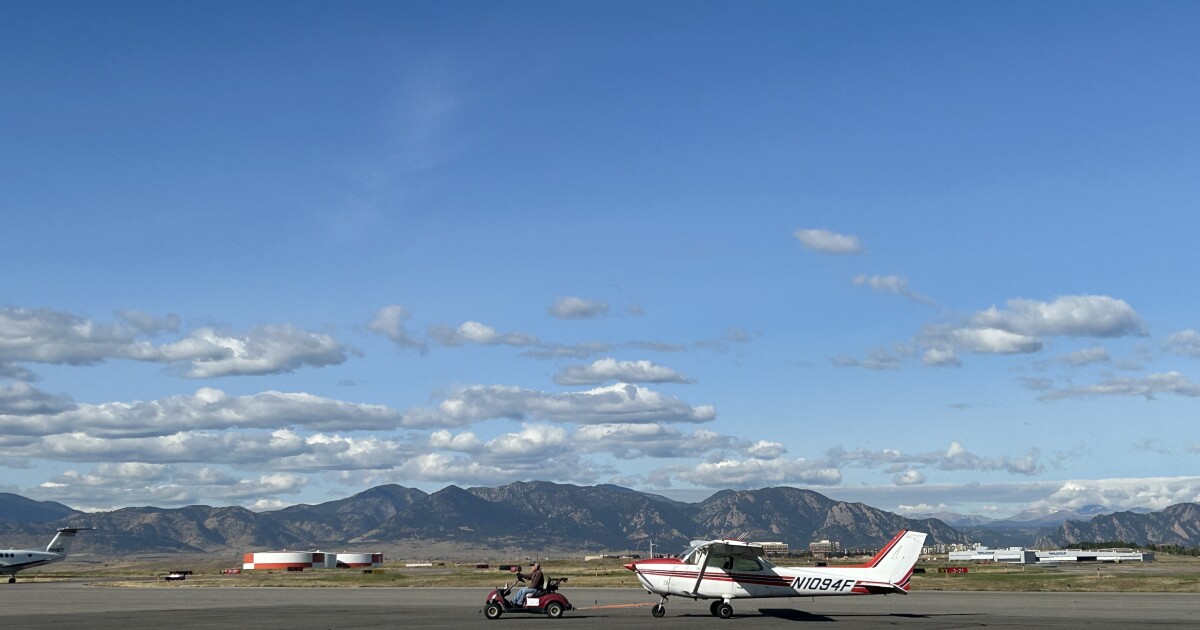

Key things here:
The gas used in the small planes with piston-driven propellers has lead in it. Yeah, the same stuff that was banned from automotive fuel because it causes brain damage in kids.
That lead in the fuel airplanes burn? It ends up in kids blood
There’s a new fuel mix starting to be available which doesn’t contain lead, and which works for all airplanes. It’s available in some places in the US, but not all of them yet.
The FAA has a plan to make going lead-free a requirement by 2031…but right now there isn’t anything stopping airport owners (often local governments) from making the switch happen faster. Only thing which might stop this is that the Republican version of the FAA reauthorization bill contains a requirement that airports keep on selling leaded fuel forever, so it’s also important to stop that from becoming law.

How in the world is are we still using leaded fuel and can’t stop for almost another decade. WTF?
Old airplane engine designs were created assuming leaded fuel, and the slight reduction in horsepower associated with pre-2022 unleaded fuels was a problem for them. So the phaseout is just getting started, with it happening in only a handful of airports to date

And IIRC, the lead contributed to long term reliability of the engine too, something you definitely want to have in a single-engine plane. You don’t want to switch fuels and end up with Cessna’s falling out of the sky.

That’s a myth.
Only sort of; the engines were designed so that the additives were important to combustion performance. Of course, the solution isn’t to keep using leaded fuel, but to rebuild the engine to be more reliable AND not depend on the additives.
Running an old engine with modern fuel will definitely cause it to fail.

It’s only important for increasing octane. You would have to reduce the performance of the engine on order to prevent knocking.

Not if you’re replacing tetraethyllead with ethanol. Both are used to increase octane, but the ethanol is hygroscopic, absorbing water from the air. If the plane sits with watery ethanol, especially if not designed for it, then corrosion will wreak havoc on the fuel system.

Ultimately, bureaucracy.
The aviation industry is second only to nuclear in regulatory conservatism. They grind through change slowly, methodically, and expensively.
Every engine manufacturer went through a lengthy certification process to get their engines approved to run on avgas. If you want to burn a slightly different kind of fuel, you either need to go through that entire process again, or you have to convince the FAA that there is so little difference in the new fuel that it will perform identically in every engine that has ever been certified on the old fuel.
They finally achieved that second one earlier this year, after decades of work.

This makes the most sense by far. I think it has a lot to do with we just don’t put the money towards research and development we did in the 40’s and 50’s. Sure we still R&D but no one is dreaming up completely new ideas from the ground up and getting funding.

The most promising short-term approach is switching from spark ignition to compression ignition: Jet fuel is very comparable to diesel fuel, and doesn’t have the same problems with lead that avgas has. It has a higher energy density, providing lower fuel burn and longer range. And it is significantly cheaper than 100LL, let alone 100UL.
Europe has a significant number of diesel-engined general aviation aircraft burning Jet-A. Several manufacturers have received supplementary type certificates to swap out gasoline engines for diesel in many of the most popular GA aircraft.
Longer term, electric and hydrogen are being researched, but it will be a long time before they are viable options in the GA fleet.

You’re forgetting the easy third option. Just ground everything that requires leaded fuel. Problem solved.

Not really an option when pretty much every flight school in the world uses them, and we already have a shortage of qualified pilots.

We already have an excess of flights. Just reduce the amount of unnecessary flying.


I don’t understand how the most viable solution is unleaded avgas and not a widespread transition away from spark ignition. Jet-A is cheaper than 100LL, let alone 100UL, but planes equipped with equivalent Jet-A diesel engines have significantly lower fuel burn and much higher range.
I would think that flight schools and other operators would be pushing their fleets to diesels just for the lower operating costs.

Another issue is that so many small airplanes use engines designed in the 40s and 50s. Sure there have been some updates over the years but the basics havent changed because of the testing requirements from the FAA on new engine designs. Aviation need to become faster at bringing affordable updates to aircraft that dont also limit capability
That definitely made it a lot harder to end the use of lead. Those old engines account for about 1/3 of the small planes in use, and made it a lot harder to develop an unleaded aviation gas suitable for all planes. (There is a widely available one which can be used in the other 2/3 already)

Funny what the threat of a billion dollar lawsuit can accomplish.

